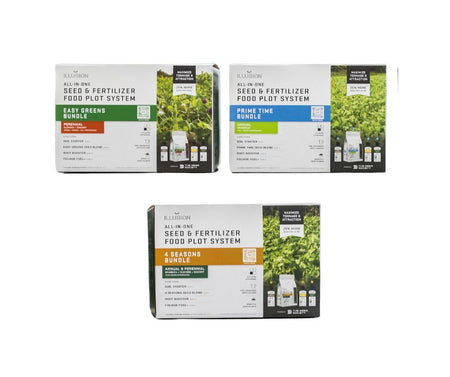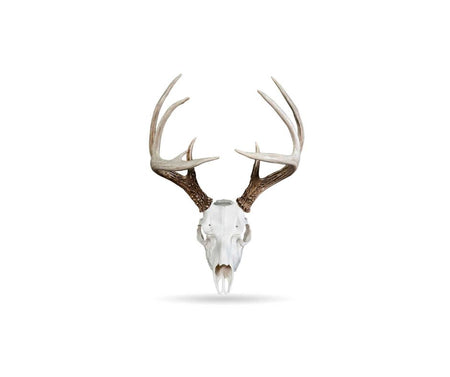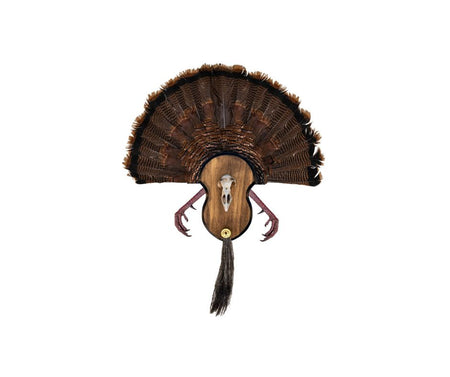12 Advanced Food Plot Tips for Quality Deer Herds
Creating advanced and strategic food plots can be a game-changer for enhancing the quality of deer herds on your property. Well-managed food plots provide essential nutrition, attract deer to specific locations, and offer hunters opportunities for successful harvests. In this guide, we'll explore 12 advanced tips to take your food plots to the next level and contribute to the overall health and development of quality deer herds.
Diversity is Key
Aim for diverse food plots that offer a wide range of nutritional options throughout the year. Mix annuals and perennials to provide consistent food sources. Consider planting different species with staggered maturity dates to ensure a constant supply of fresh forage.

Utilize Protein-Rich Forages
Incorporate protein-rich forages like soybeans and peas in your food plots. These legumes provide essential nutrients during the critical antler development and fawning periods, contributing to the overall health and growth of your deer population.

Embrace Warm-Season and Cool-Season Crops
Strategically use both warm-season and cool-season crops in your food plots. Warm-season crops like soybeans and corn attract deer during summer and fall, while cool-season crops like clover and brassicas offer nutrition during spring and winter.

Crop Rotation for Optimal Nutrition
Implement crop rotation techniques to optimize nutrition and soil health. Rotate different crops in specific areas each year to prevent soil depletion and provide varied food options for deer.
Benefit from Fruit Trees
Consider planting fruit trees like apple, pear, and persimmon around your food plots. These fruit-bearing trees provide additional nutrition and attract deer during specific periods, making them a valuable supplement to your food plot strategy.
Strategic Plot Placement
Strategically place food plots throughout your property to encourage natural deer movement and minimize hunting pressure. Use topographical features like ridges and funnels to guide deer movement and create safer, secluded areas for them to feed.

Supplemental Feed Management
If legal in your area, implement a supplemental feeding program during critical periods when natural forage may be scarce. High-quality feed pellets can provide essential nutrients, especially during harsh winter months.
Year-Round Monitoring with Trail Cameras
Use trail cameras to monitor deer activity year-round. Observe their behavior, identify individual deer, and track antler growth progression. This data will help you make informed decisions about your food plot strategy and overall deer management plan.
Enhance Habitat Around Food Plots
Focus on improving habitat quality around your food plots. Plant native grasses, wildflowers, and shrubs to create additional cover and food sources. Providing a balanced habitat ensures that deer can thrive beyond the boundaries of your food plots.

Implement Timber Management
If you have wooded areas near your food plots, consider implementing timber management practices. Thinning and selective cutting can create edge habitat, promoting understory growth and enhancing deer habitat diversity.
Year-Round Water Sources
Ensure access to year-round water sources near your food plots. Installing water troughs, ponds, or natural water features will increase deer usage and keep them on your property.

Minimize Disturbance
Minimize disturbance around your food plots, especially during sensitive periods like the rut or fawning season. Avoid frequent visits, heavy equipment use, or unnecessary noise that could deter deer from using the plots.
In conclusion, advanced food plot management is a powerful tool for improving the quality of deer herds on your property. Embrace diversity, utilize protein-rich forages, and strategically implement warm-season and cool-season crops to provide a year-round food supply. Monitor deer activity with trail cameras, supplement natural forage with feed when necessary, and enhance habitat quality around your food plots.
Strategic plot placement, timber management, and water source availability all contribute to creating a thriving deer habitat. Remember to minimize disturbances to maintain a peaceful and attractive environment for deer. By applying these advanced food plot tips, you'll not only enhance the overall health and quality of your deer herds but also increase your chances of successful hunting opportunities. Happy food plotting and deer management!







